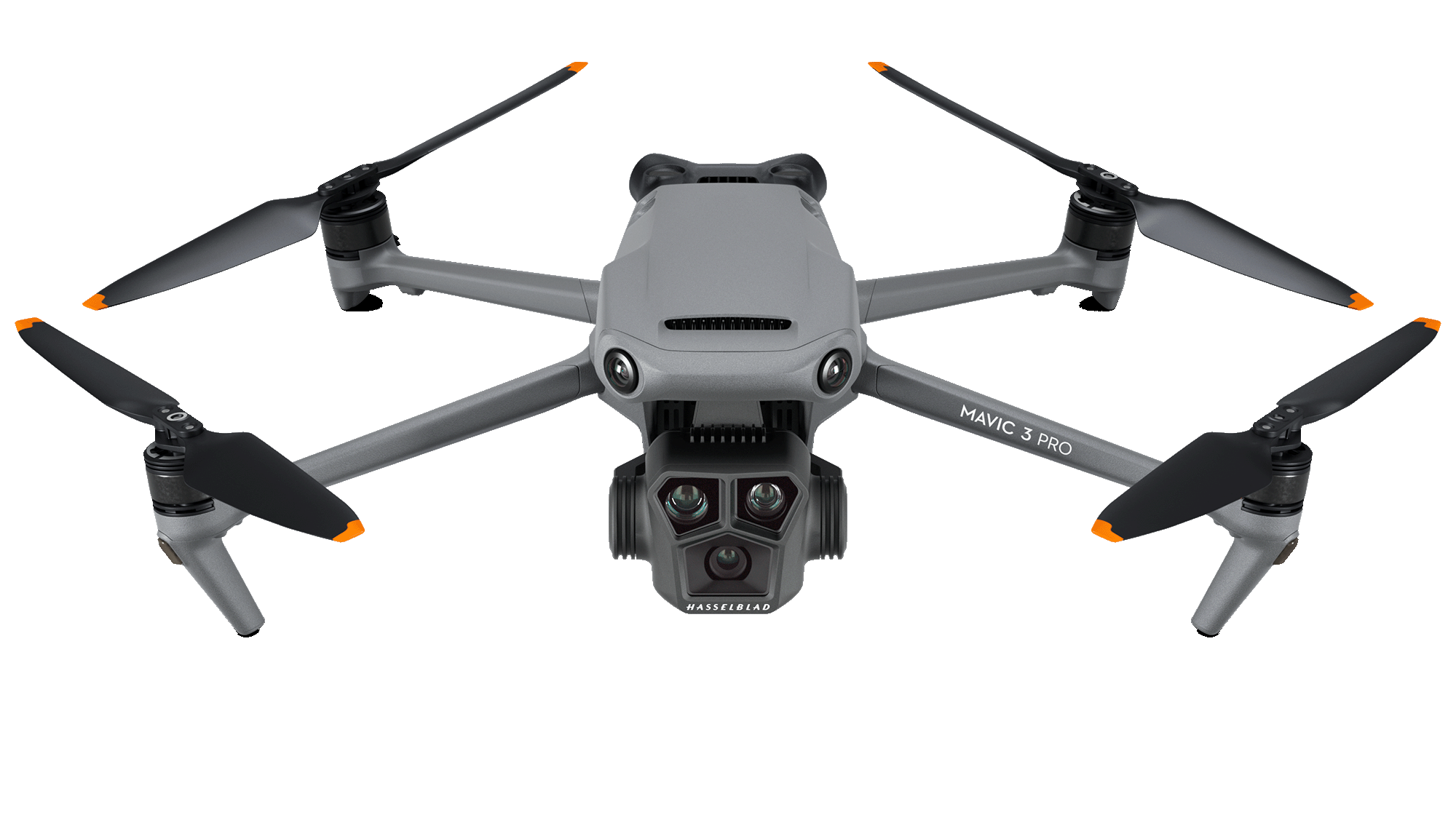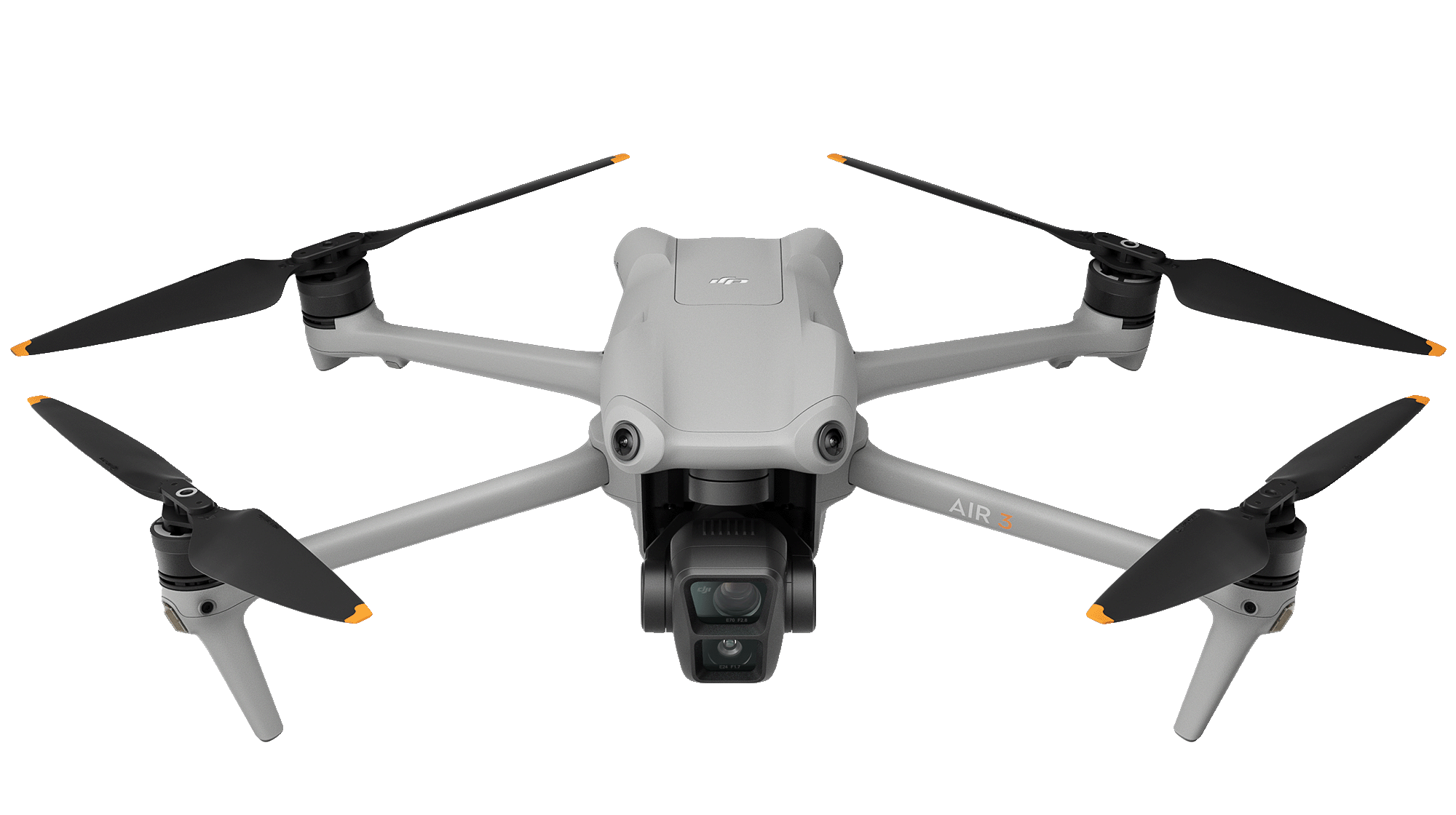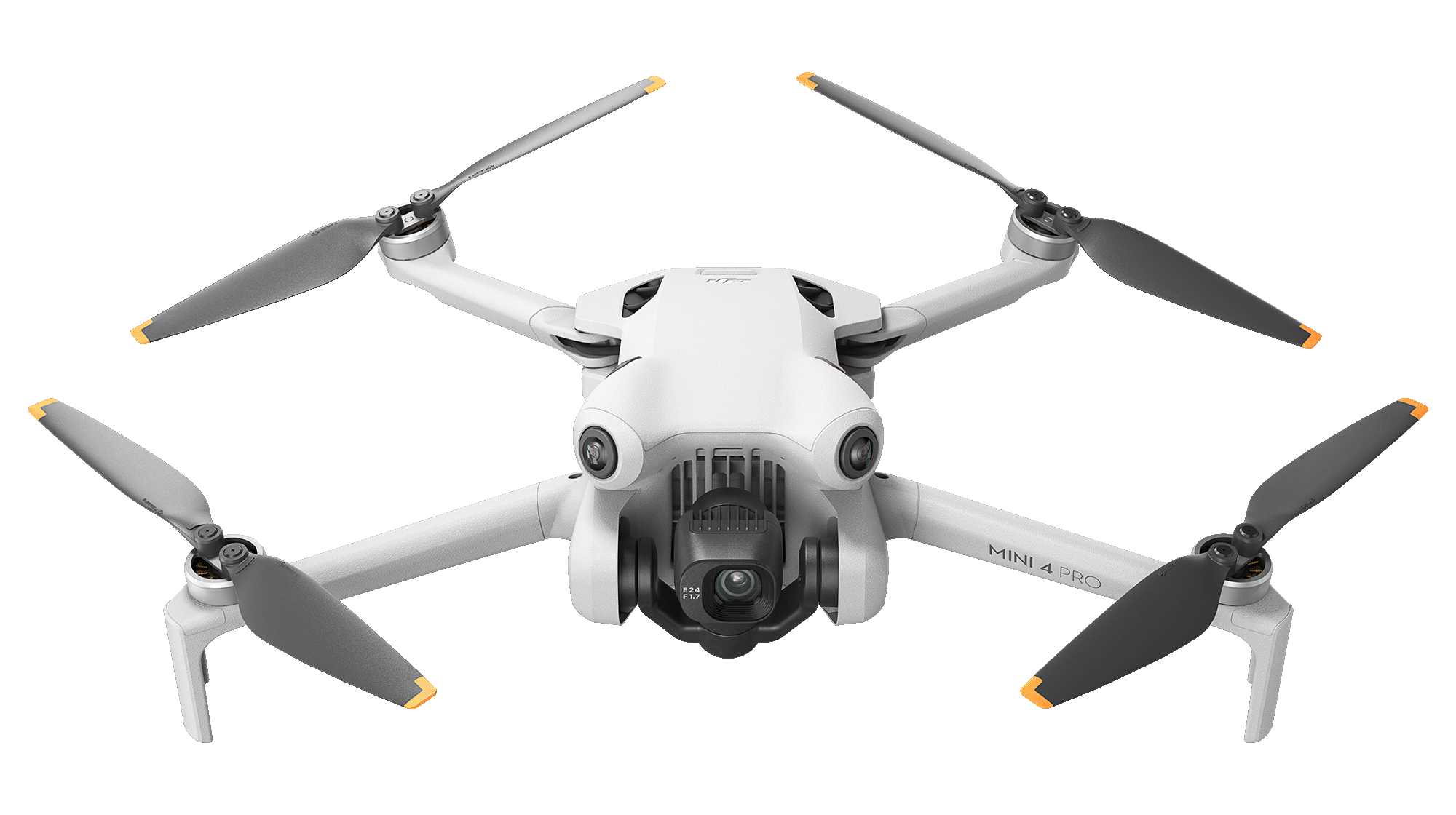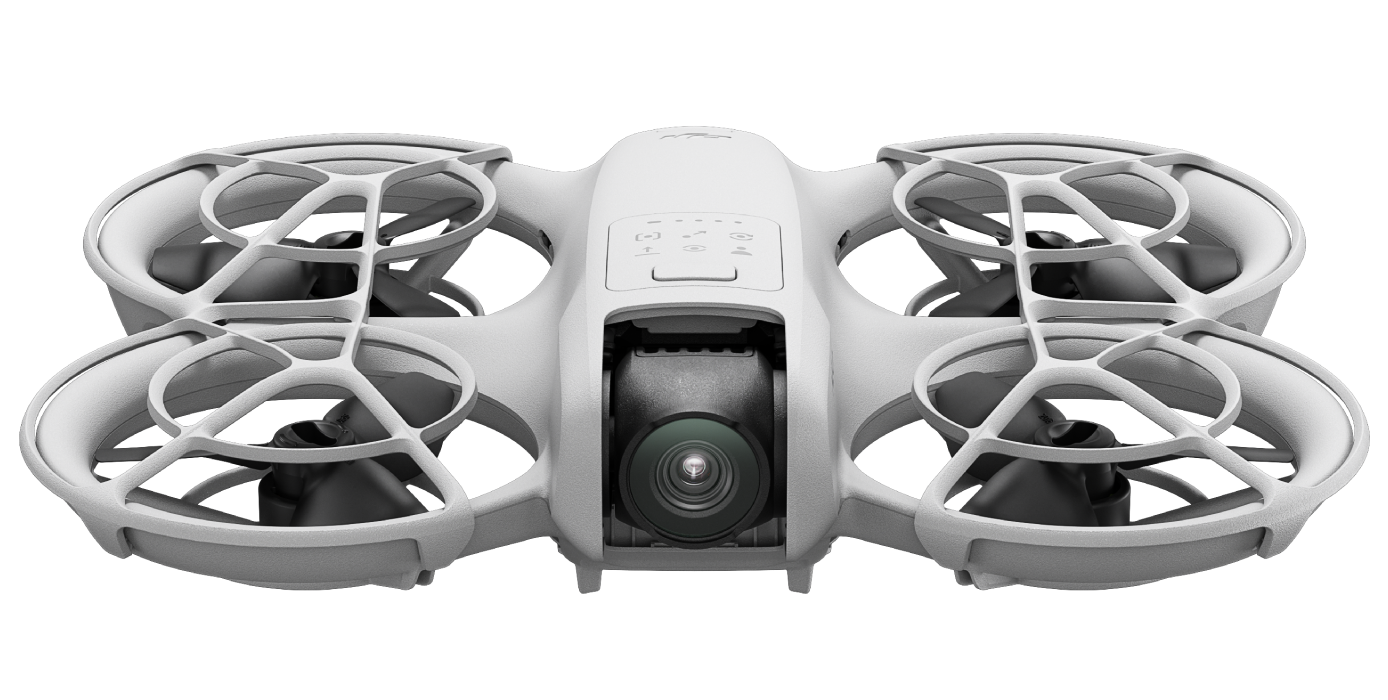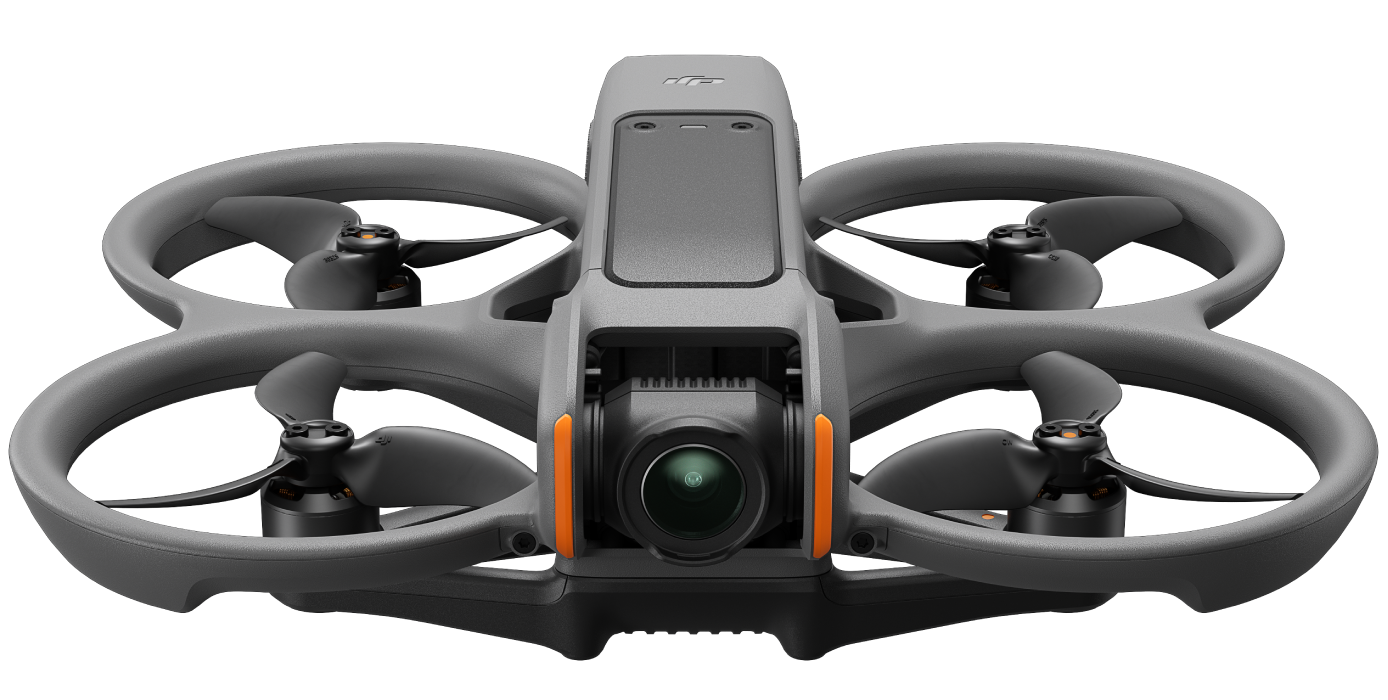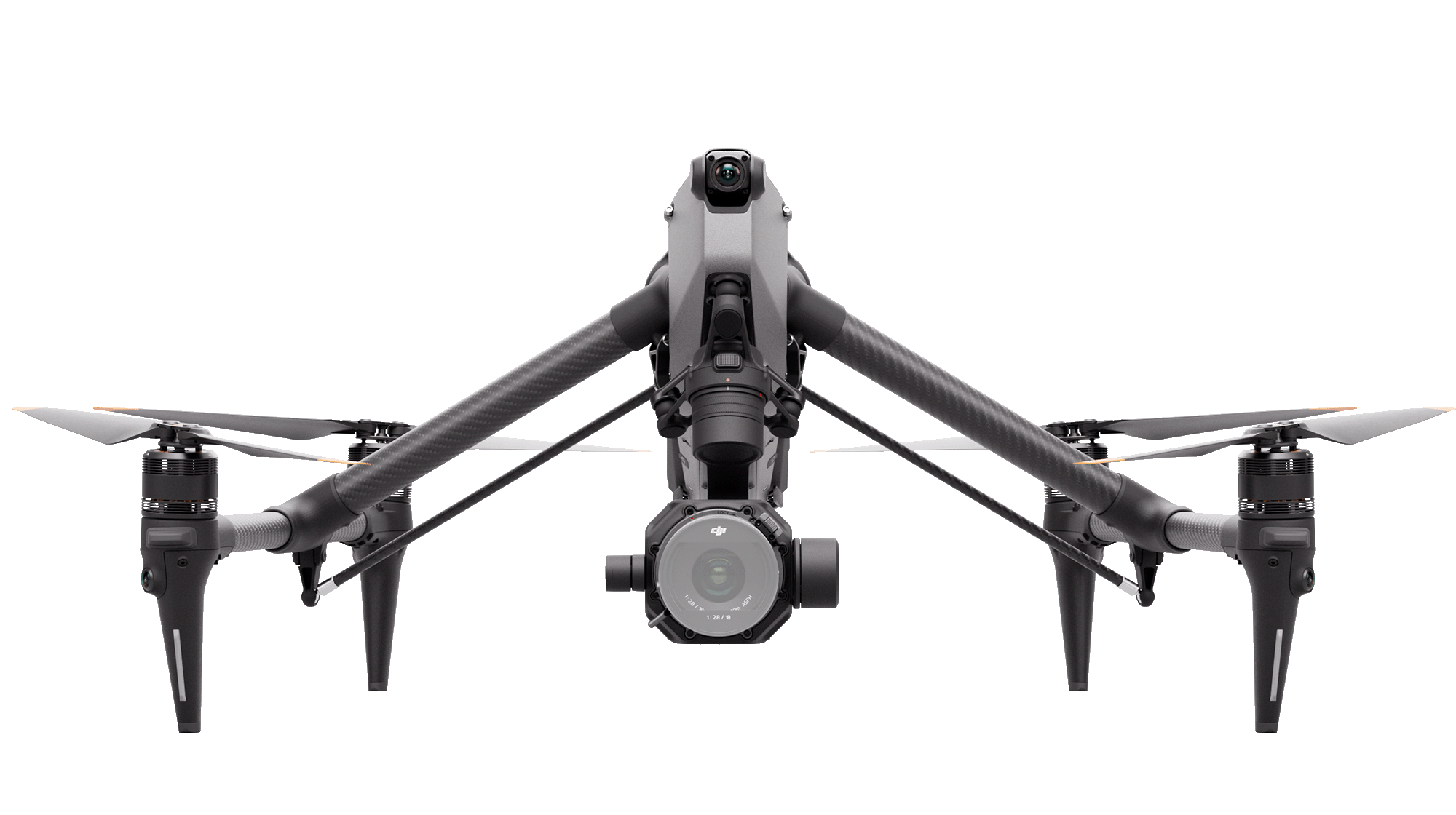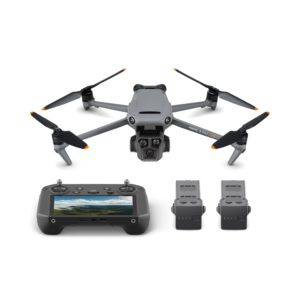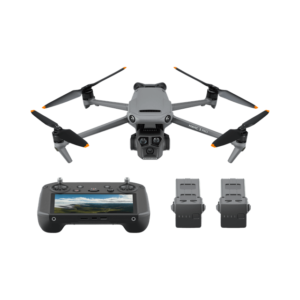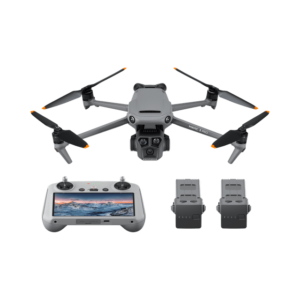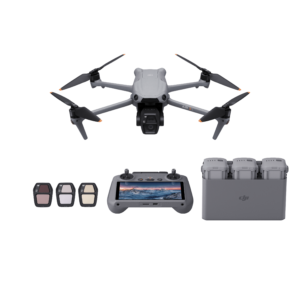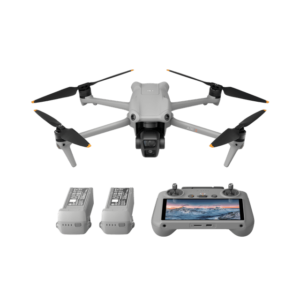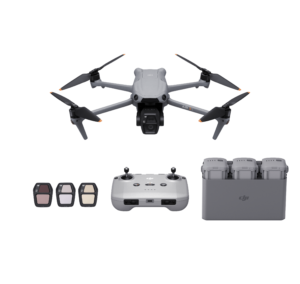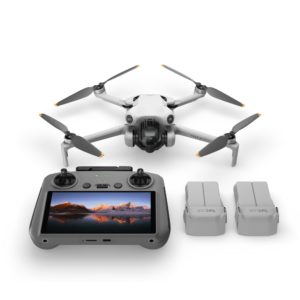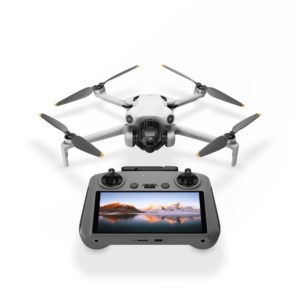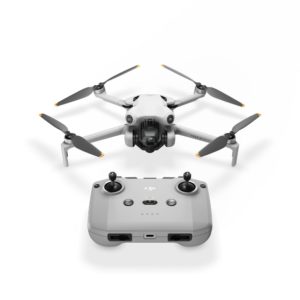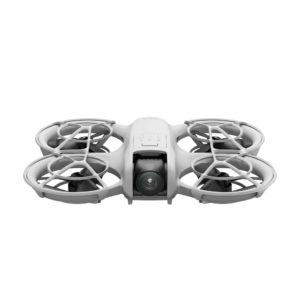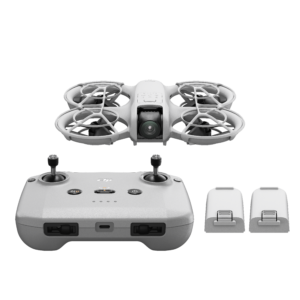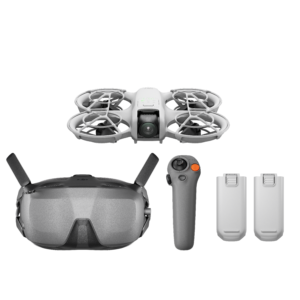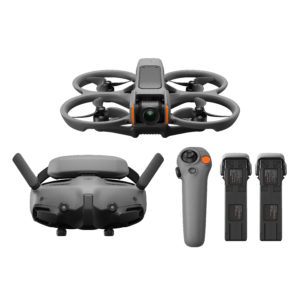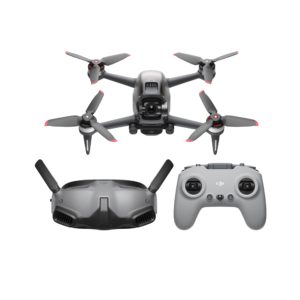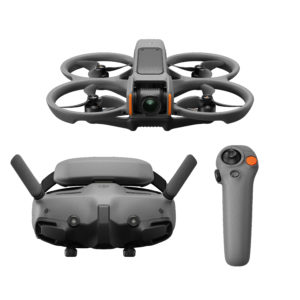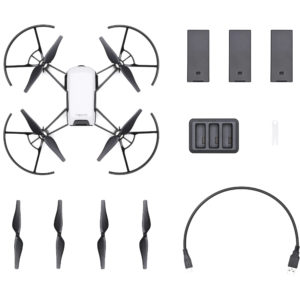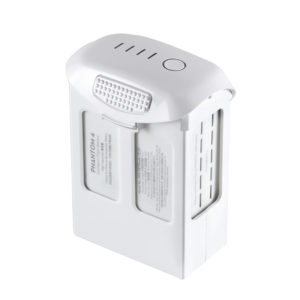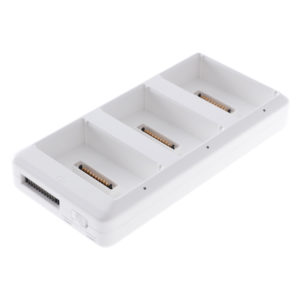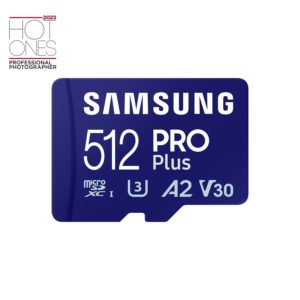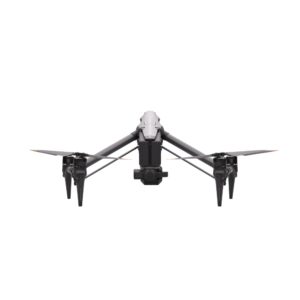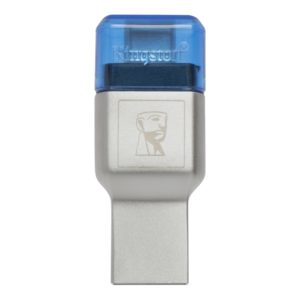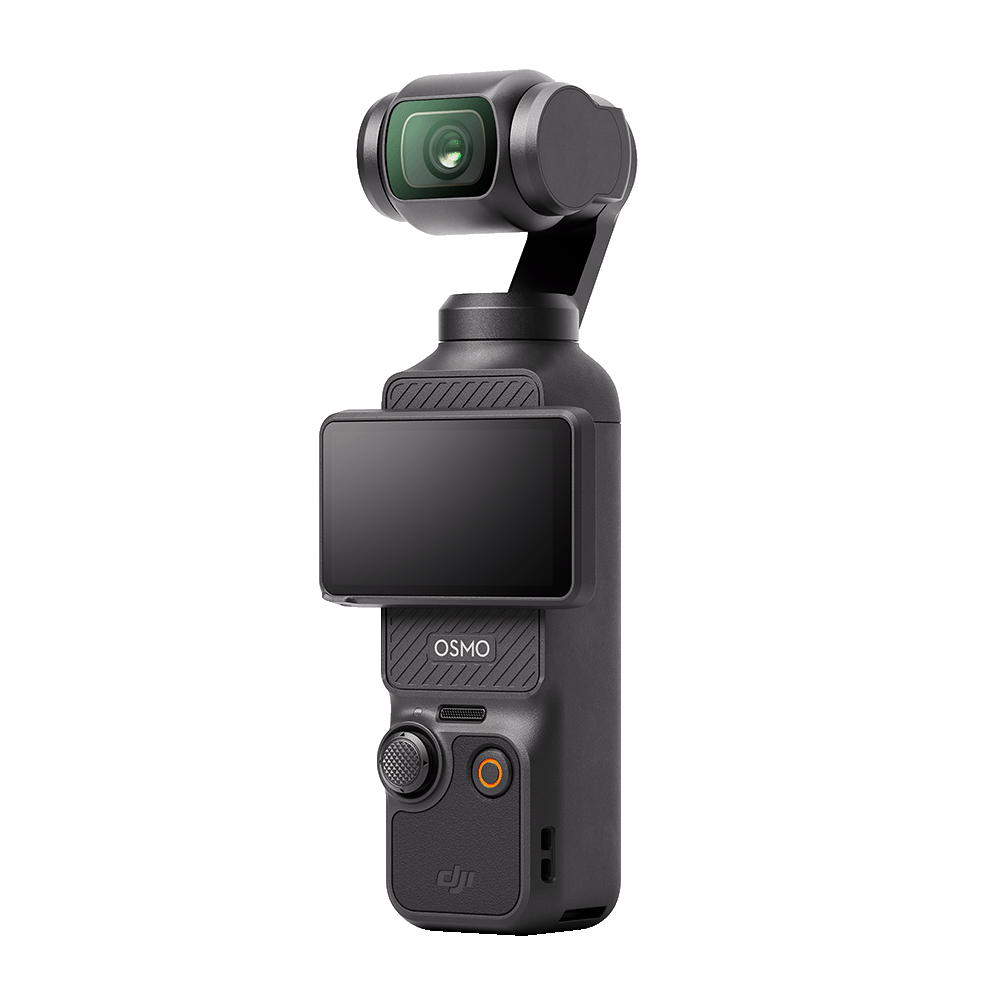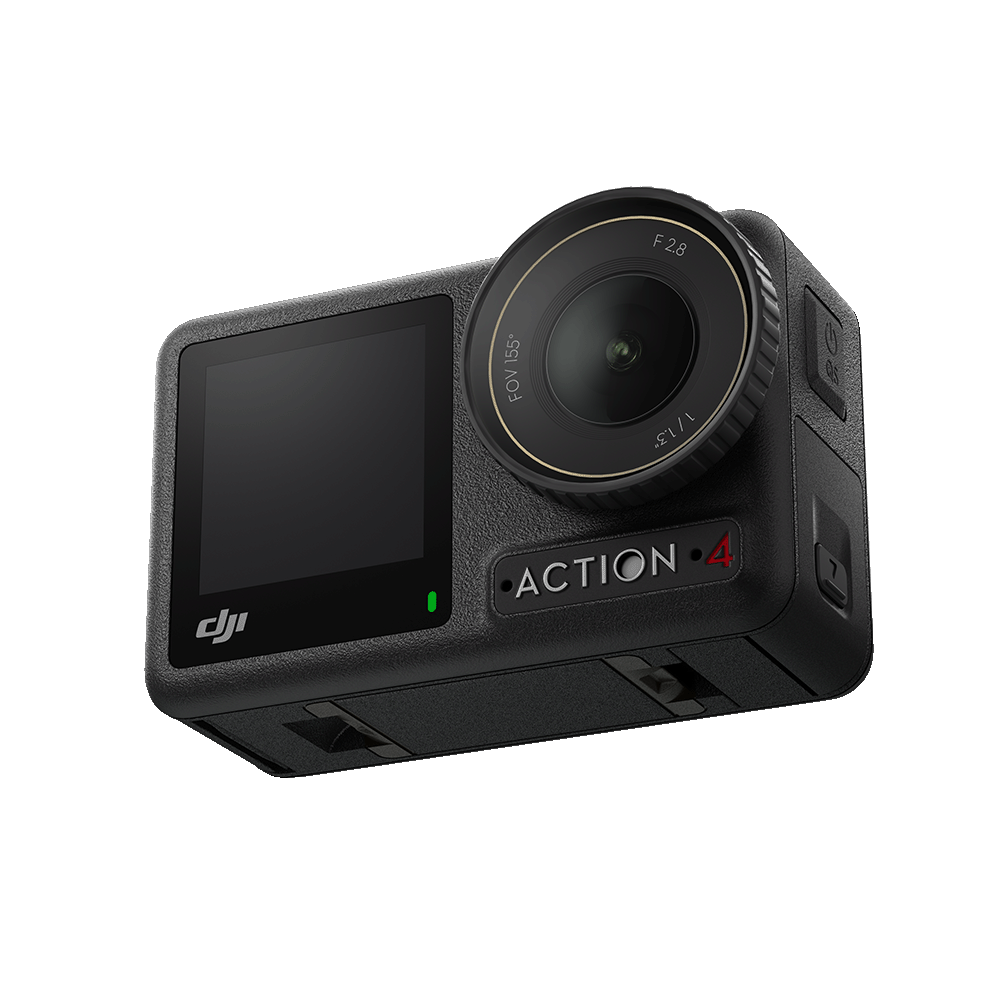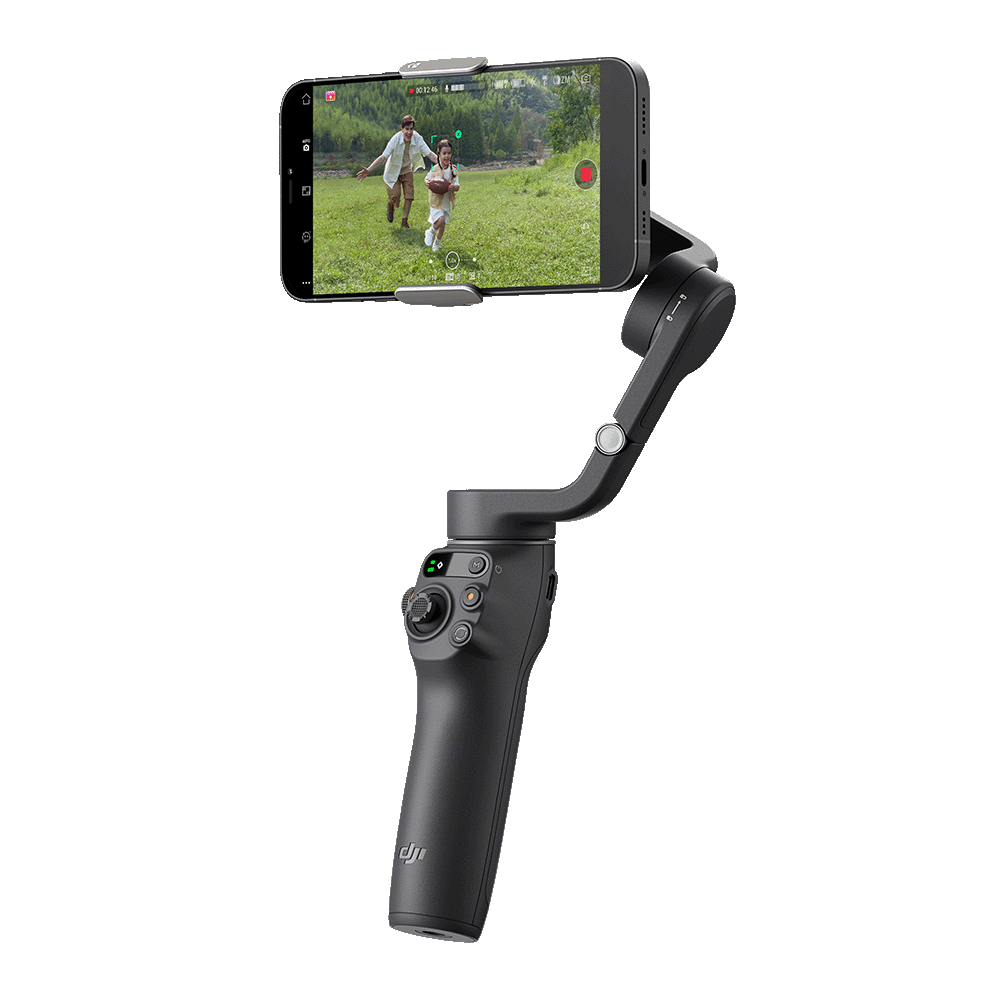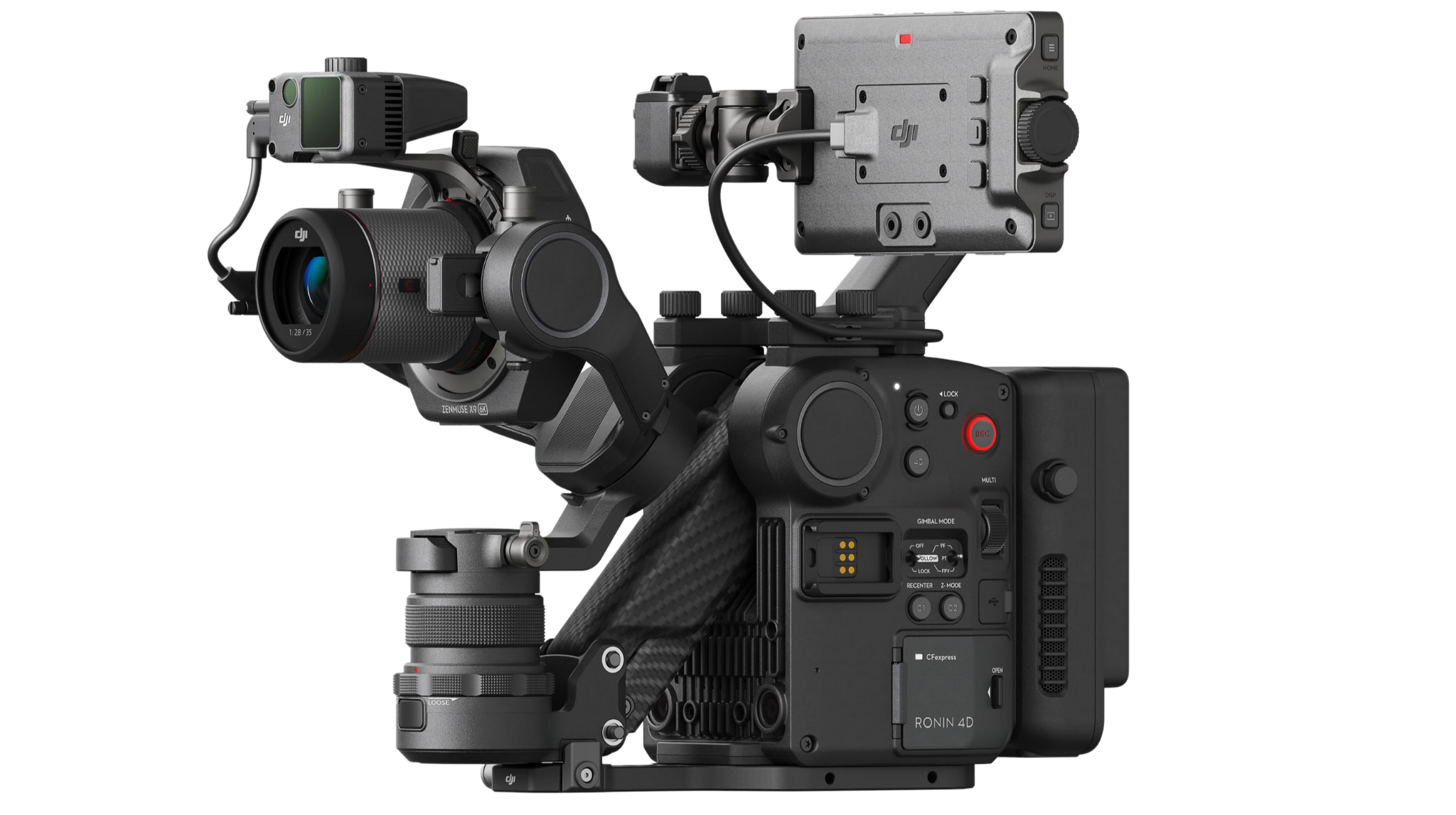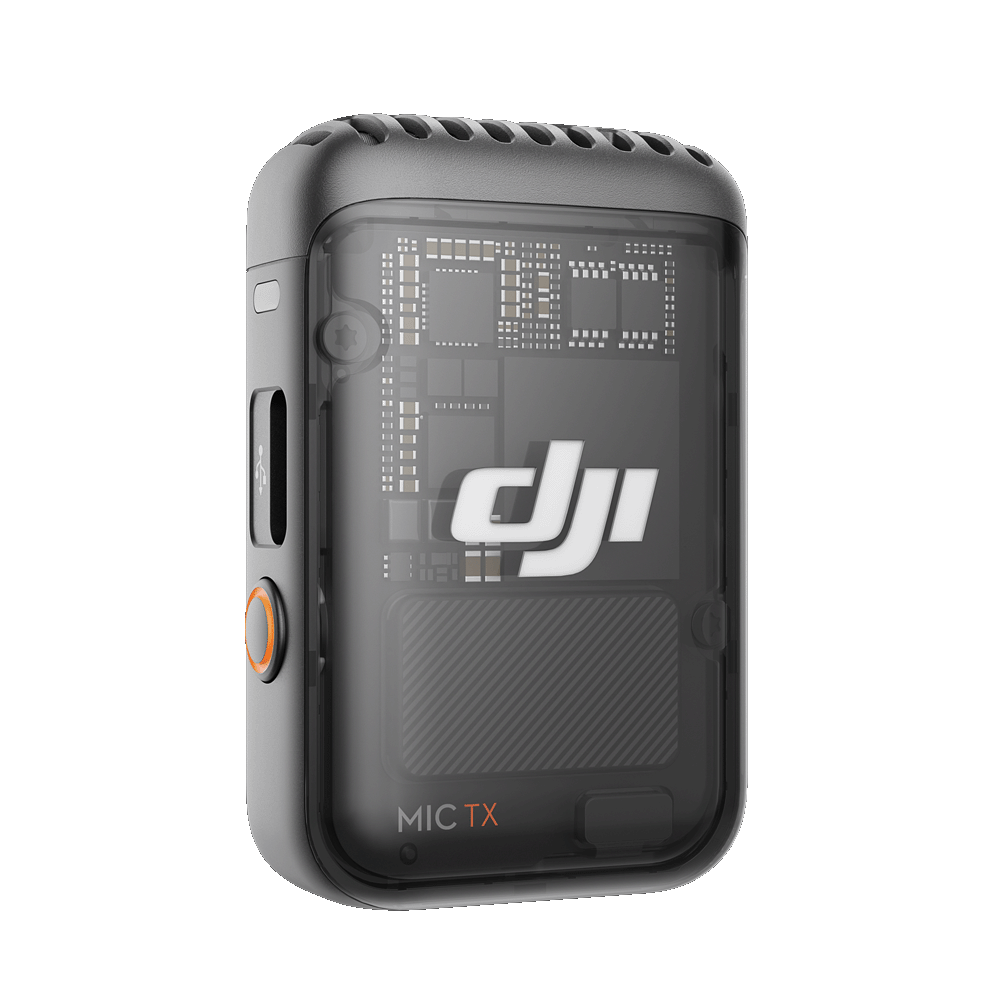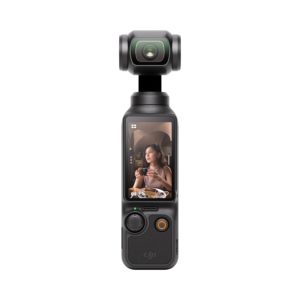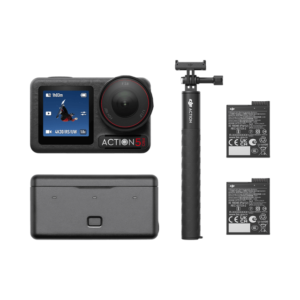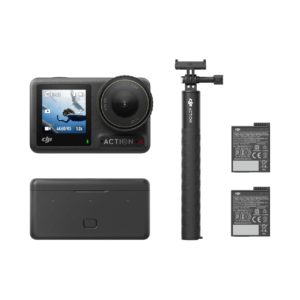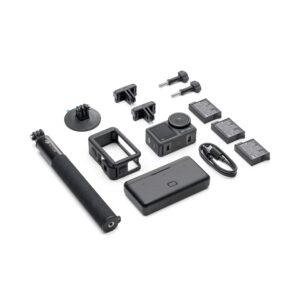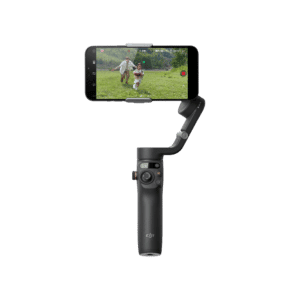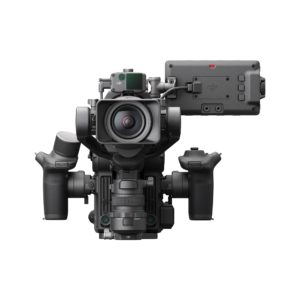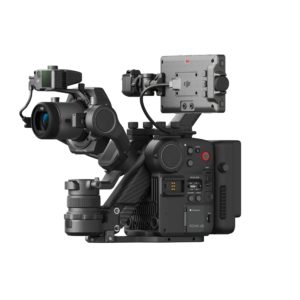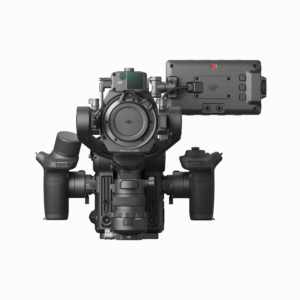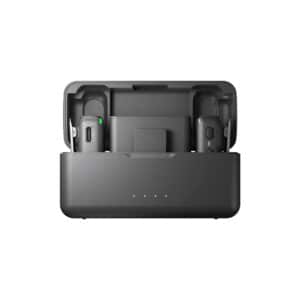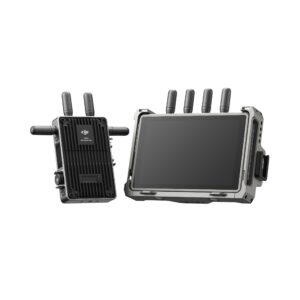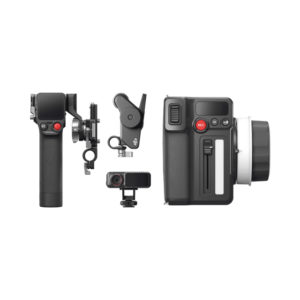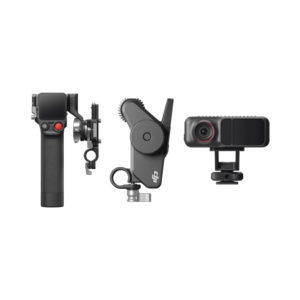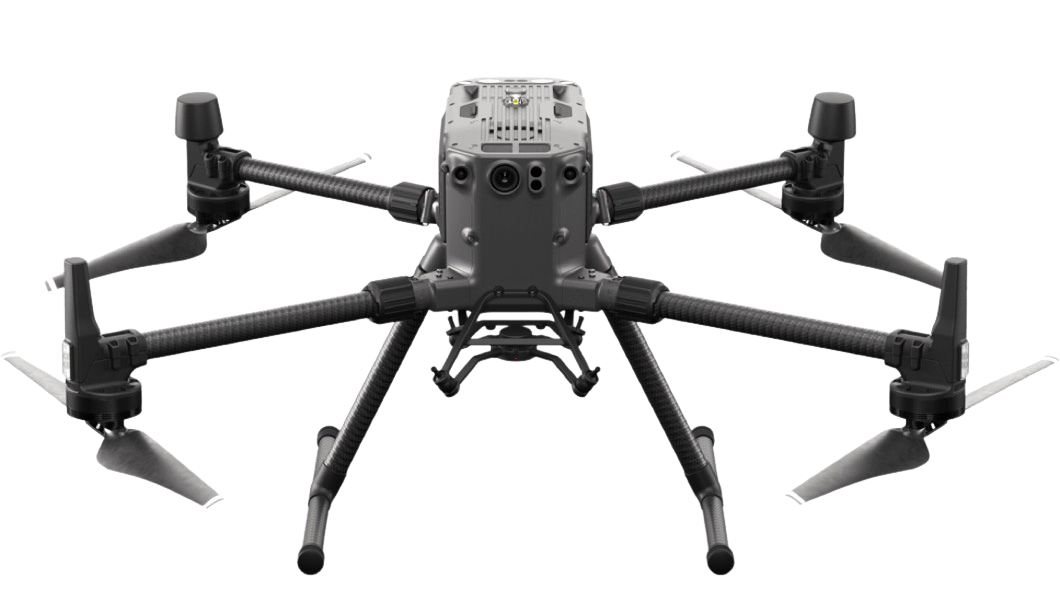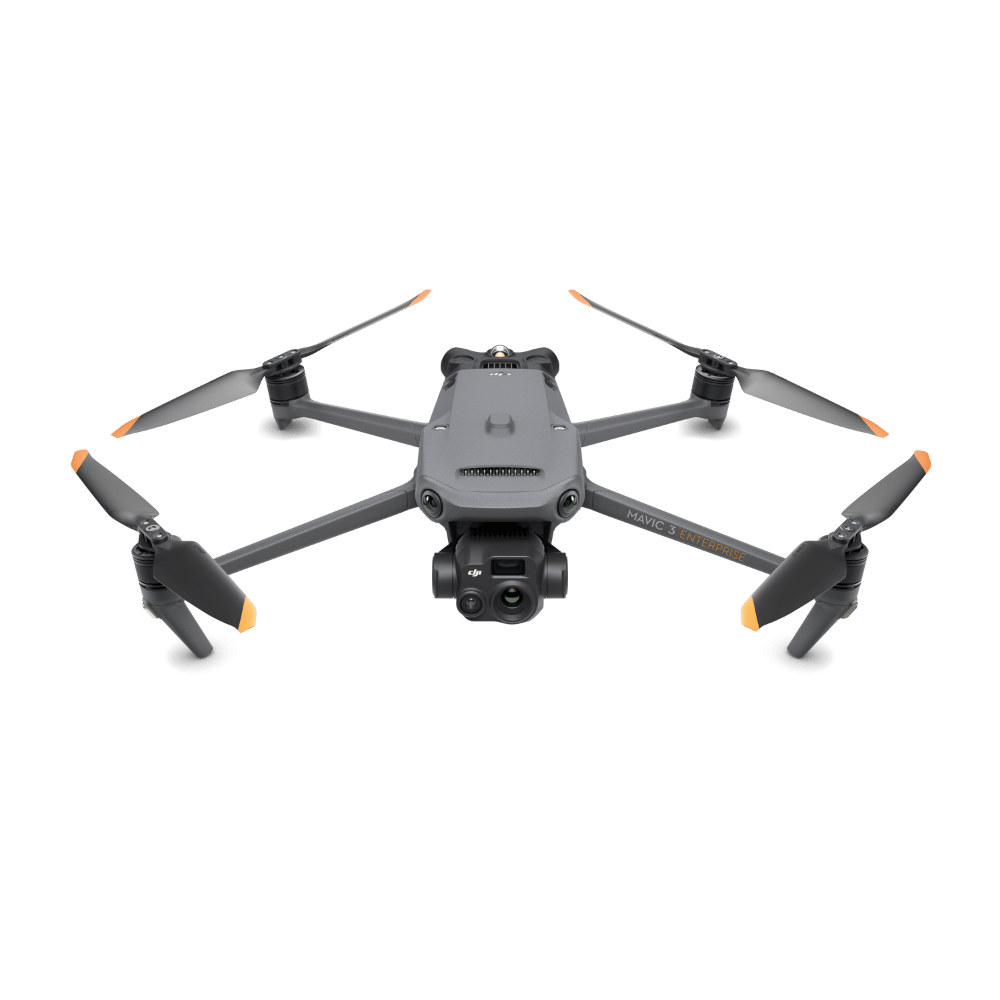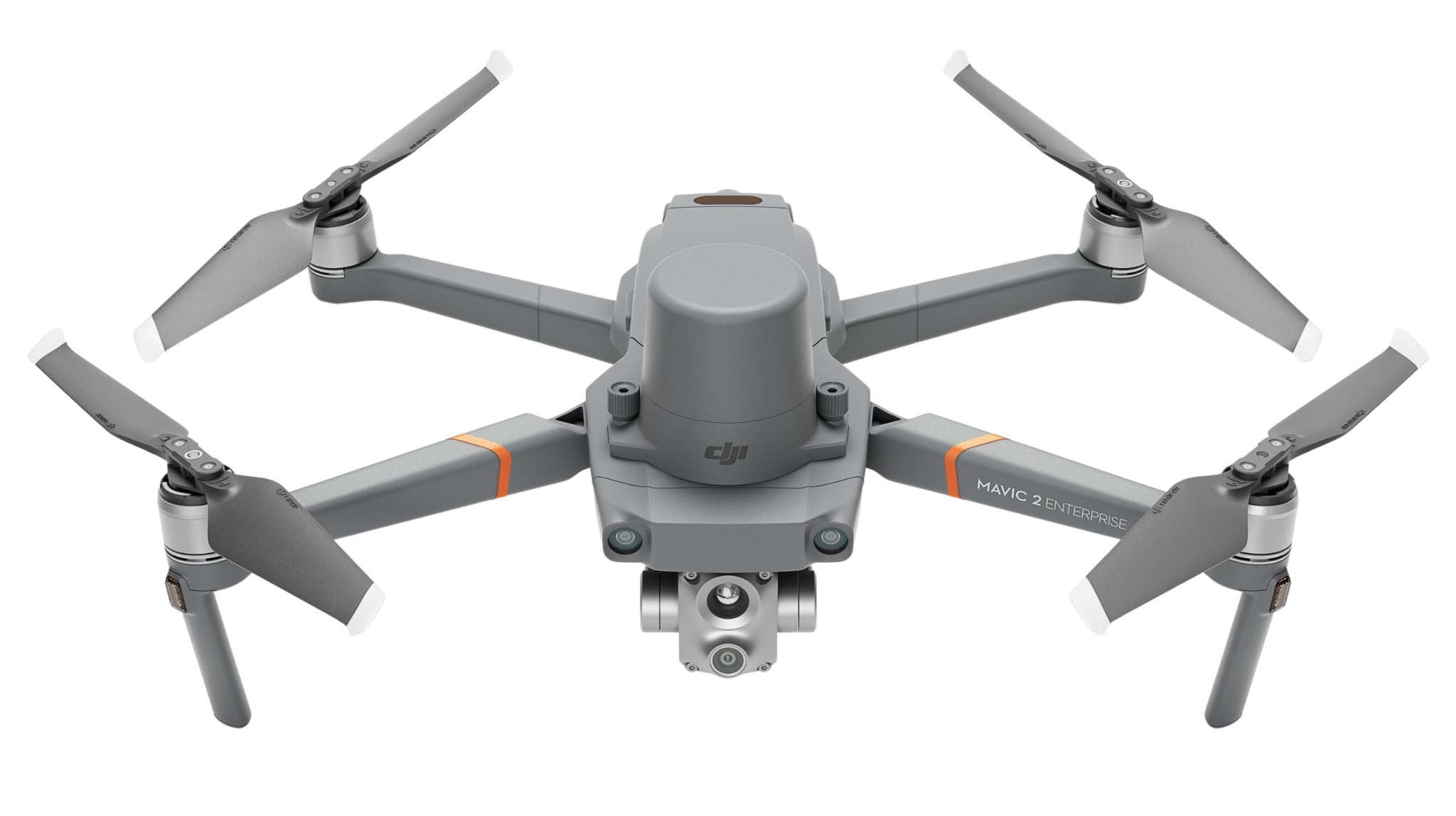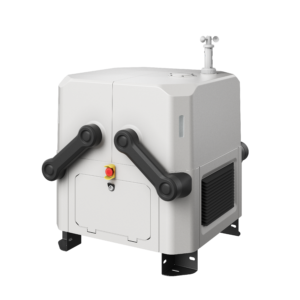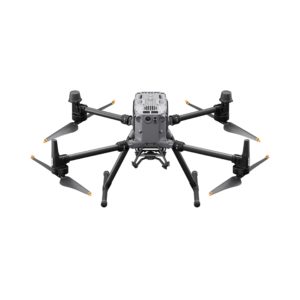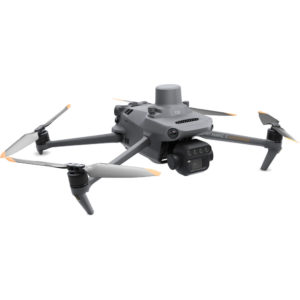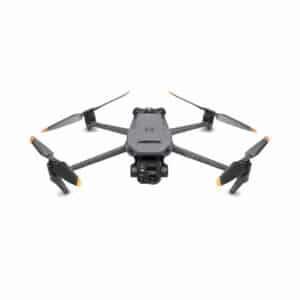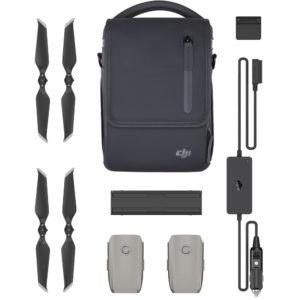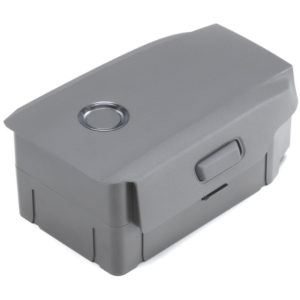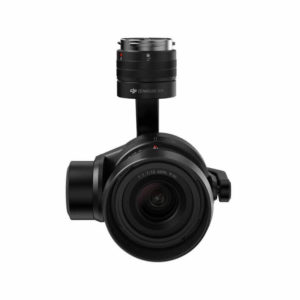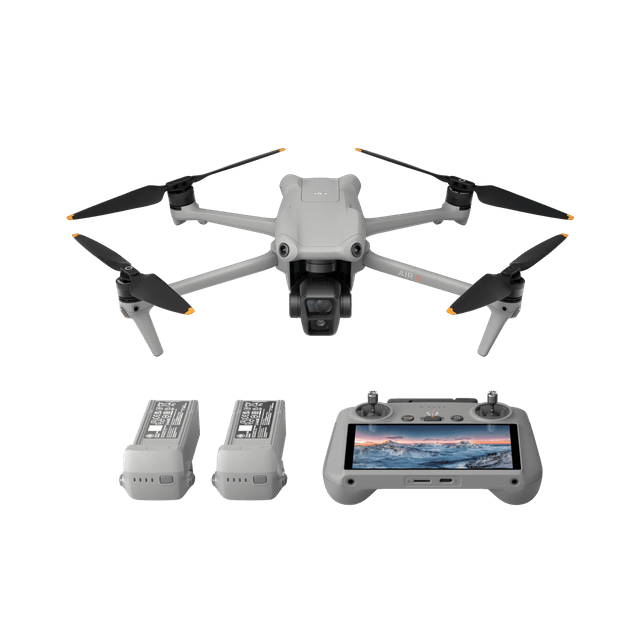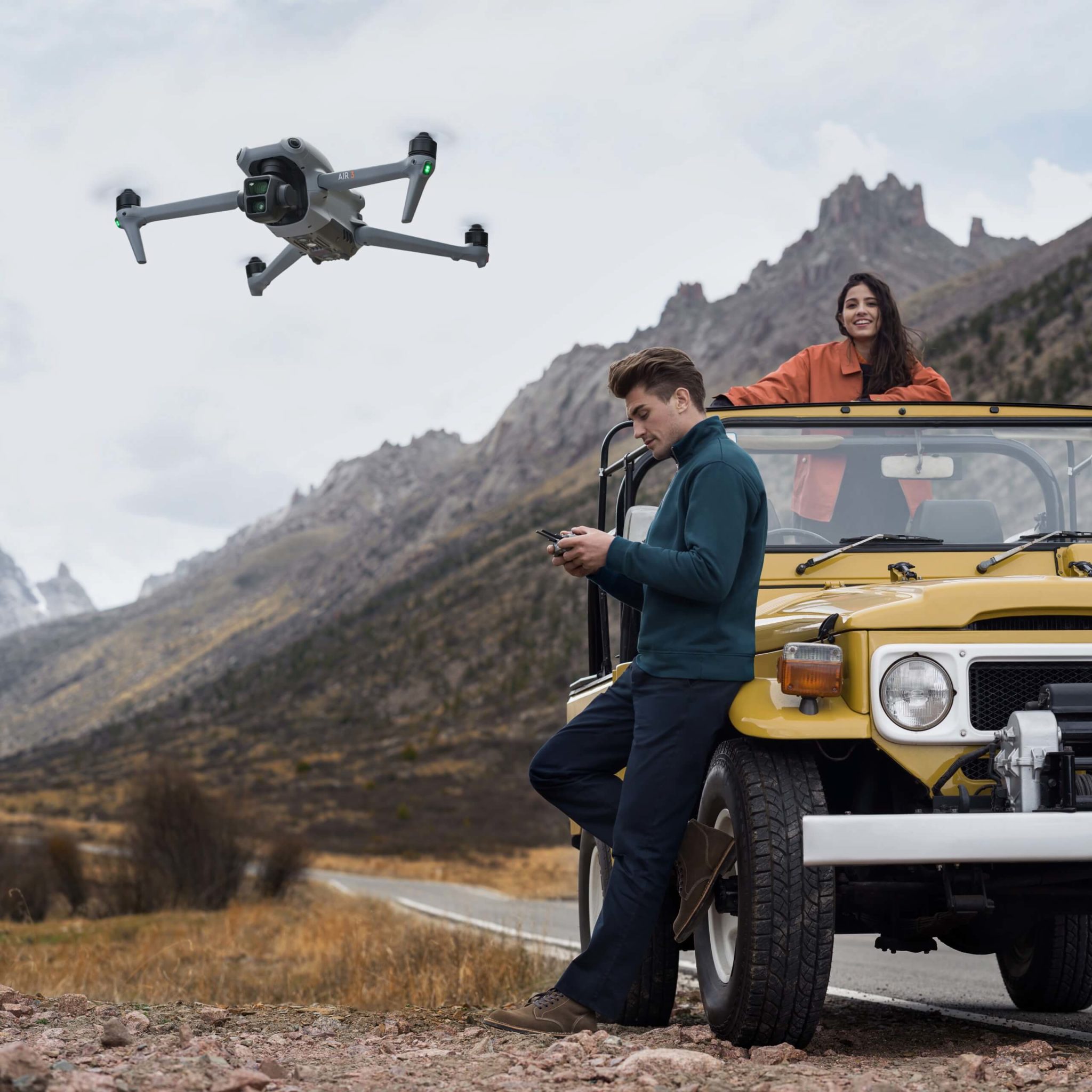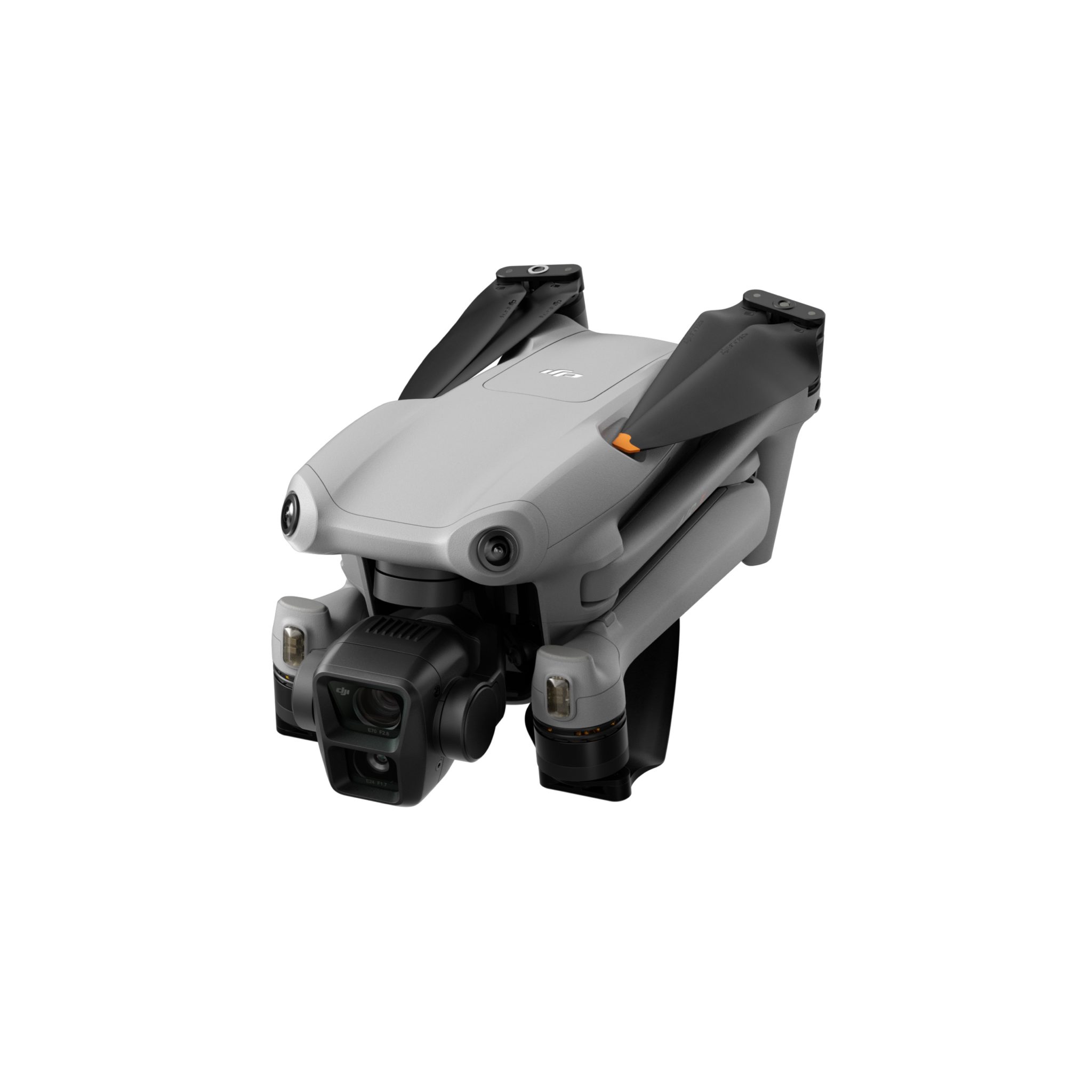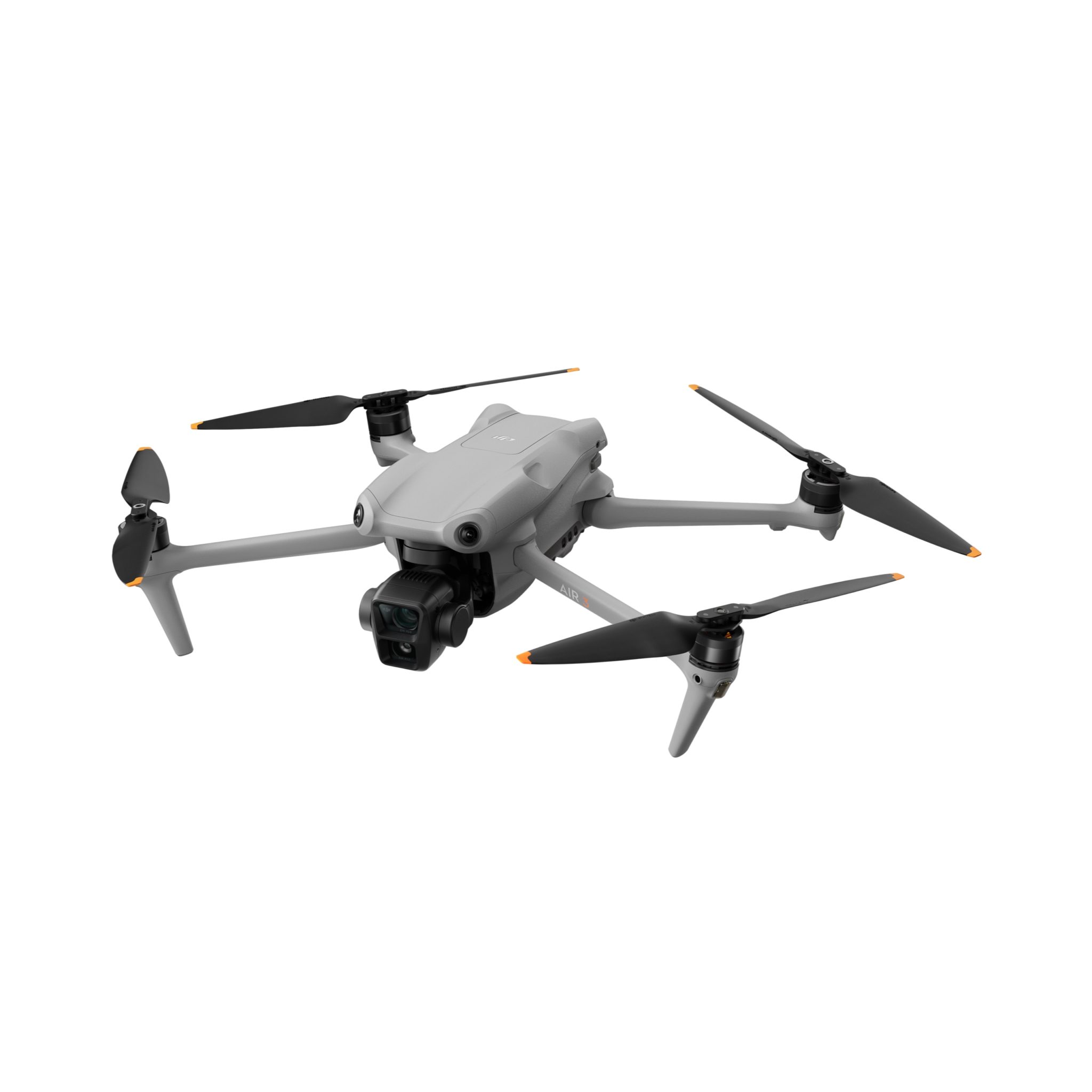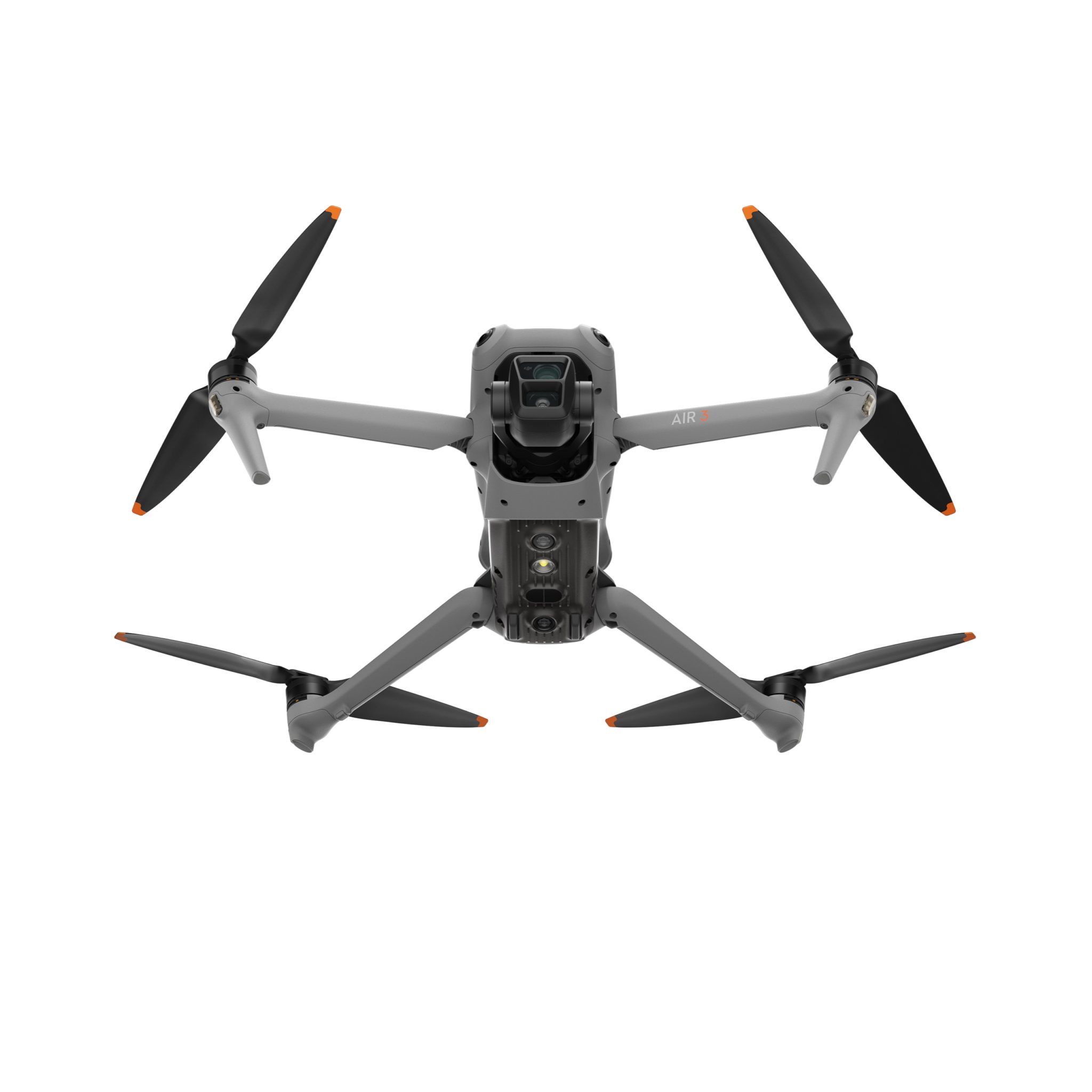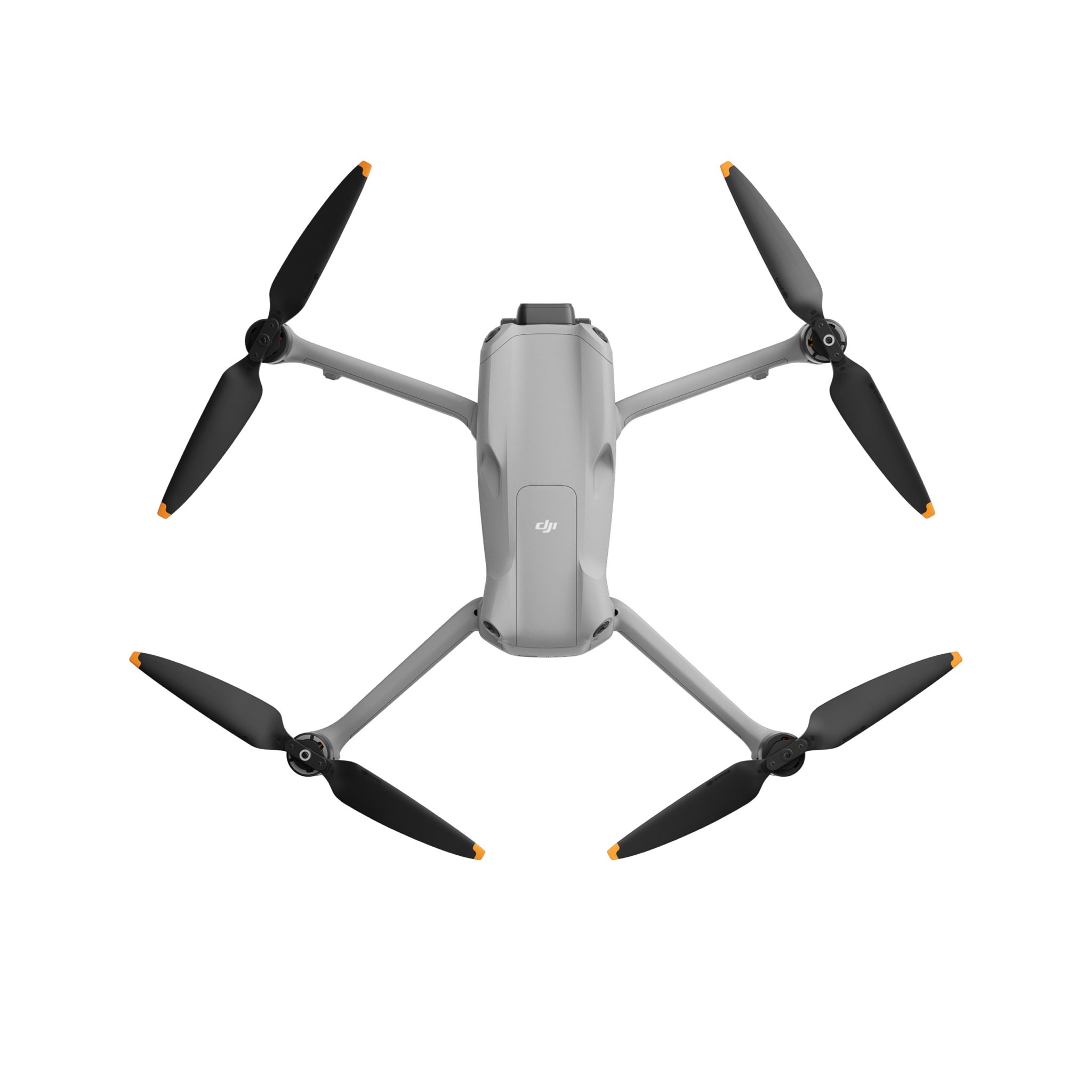Nánari upplýsingar
Take a Closer Look
Complementary Camera Performance
The 1/1.3-inch-CMOS wide-angle camera and 3x medium tele camera deliver consistent image quality [1] and more dynamic imaging possibilities.
46-Min Max Flight Time

Air 3’s 46-minute flight time [3] is a 48% increase. [2] The battery charging hub also allows power transfer among batteries. [4]
Dual-Camera 48MP Photos

Both cameras can deliver 48MP photos filled with true-to-life details that look great and allow seamless cropping in post for those who need it.
4K/60fps HDR Videos

The two 1/1.3-inch CMOS sensors support dual native ISO for 4K/60fps HDR videos without cropping, providing rich, natural-looking results.
Omnidirectional Obstacle Sensing

Air 3 can detect obstacles in all directions [5] and can use APAS 5.0 to perform smoother avoidance [6] for a safer overall flight experience.
O4 HD Video Transmission
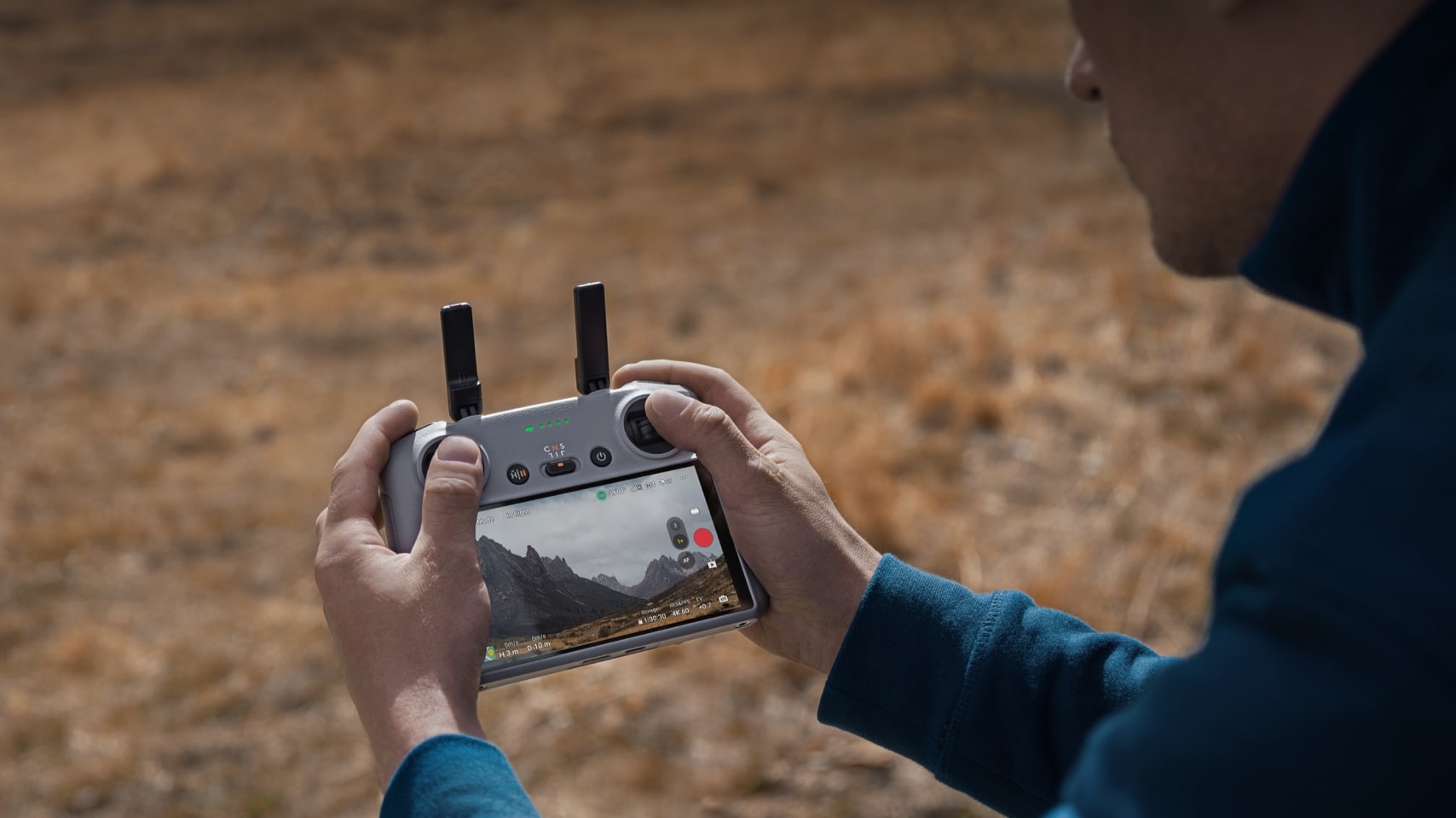
The next-gen O4 video transmission provides a max range of 10 km [7] with increased stability, and a 1080p/60fps max-quality live feed.
In the Box
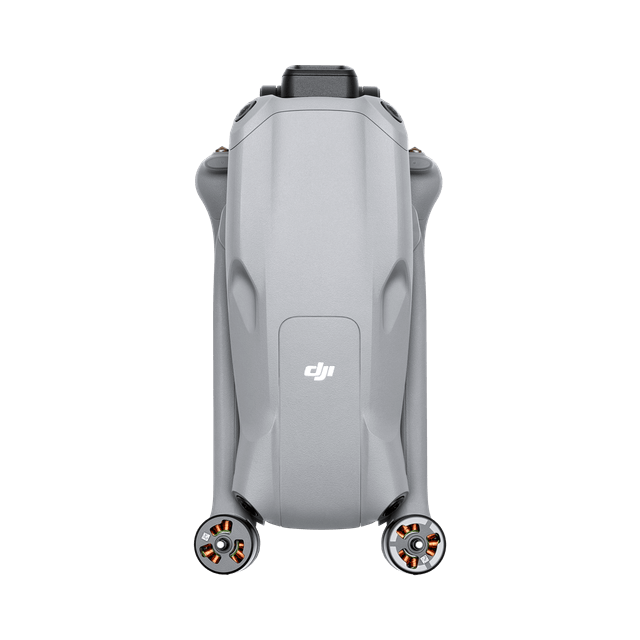 |
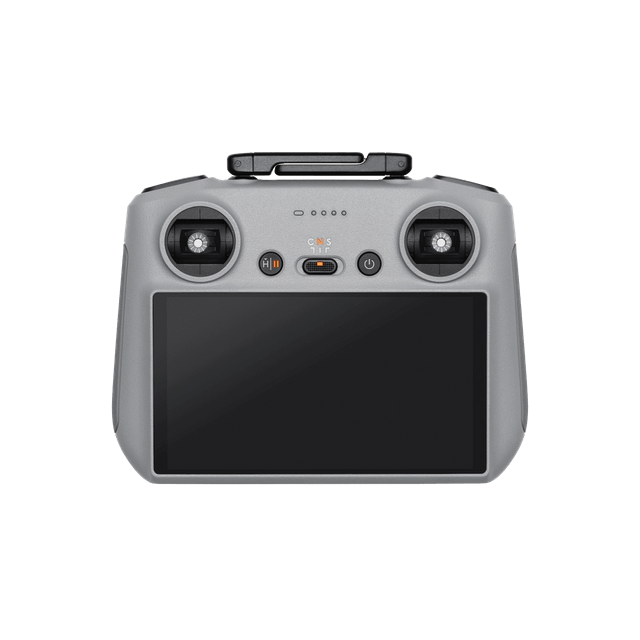 |
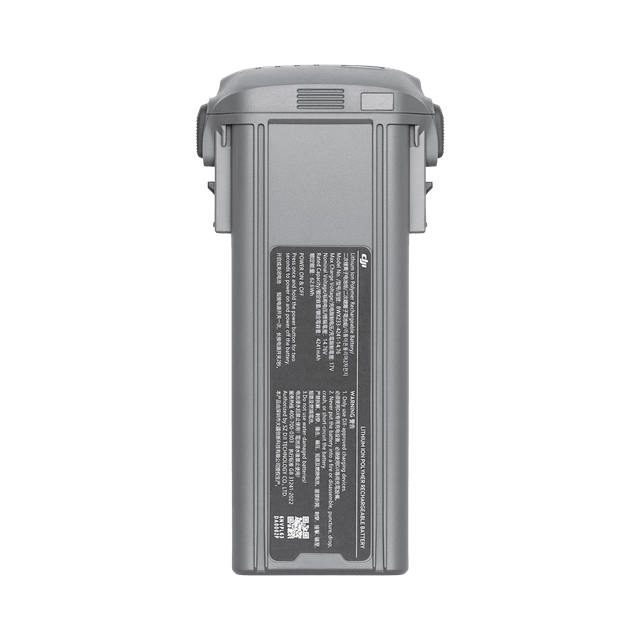 |
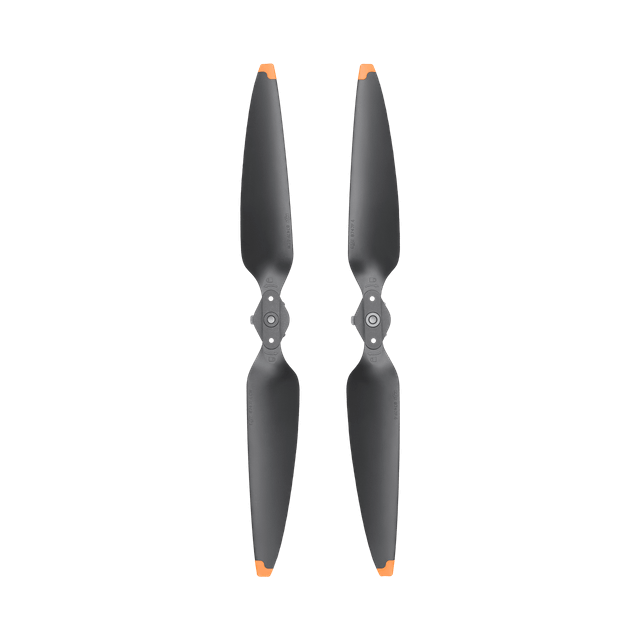 |
 |
 |
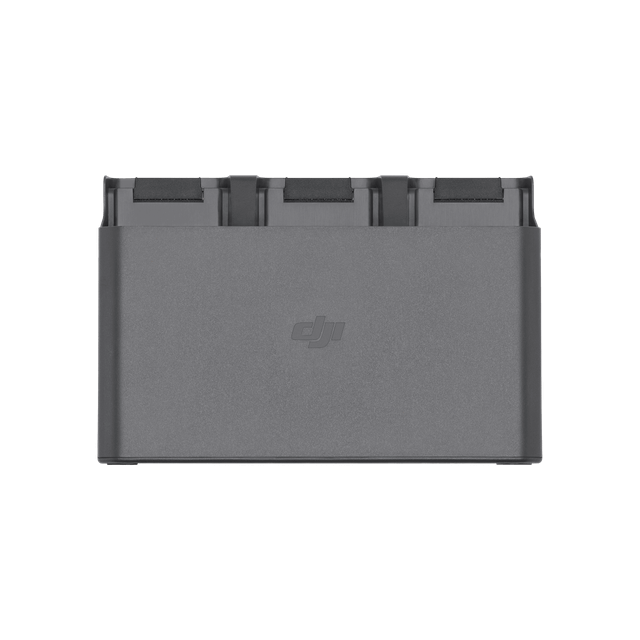 |
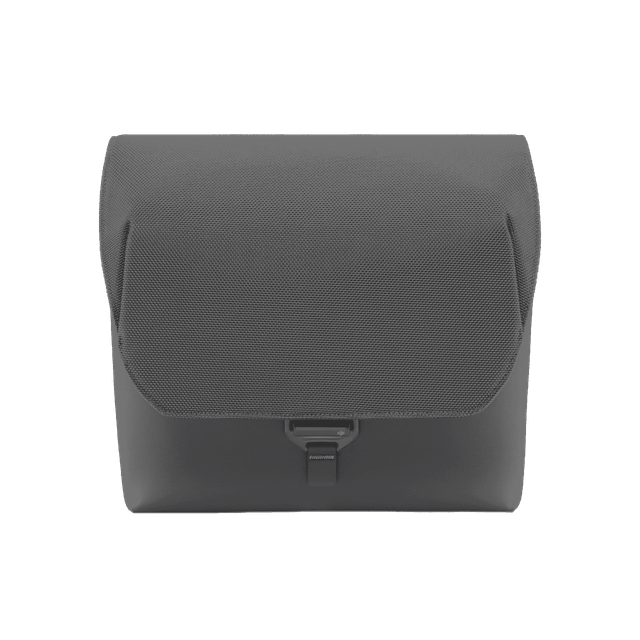 |
Footnotes
- The wide-angle camera and 3x medium tele camera have different apertures.
- Compared with DJI Air 2S.
- Measured with DJI Air 3 flying at a constant speed of 28.8 kph in a windless environment at sea level, with APAS off, AirSense off, camera parameters set to 1080p/24fps, video mode off, and from 100% battery level until 0%. Data is for reference only. Always pay attention to reminders in the app during flight.
- The power accumulation function can transfer the remaining power from multiple batteries to the battery with the highest remaining power. DO NOT connect the charger, connect external devices, or insert/remove any batteries when using this function.
- DO NOT use the aircraft in severe weather conditions, including heavy wind exceeding 12 m/s, snow, rain, fog, hail, or lightning. DO NOT fly the aircraft 6,000 m (19,685 ft.) or higher above sea level. DO NOT fly the aircraft in environments where the temperature is below -10° C (14° F) or above 40° C (104° F). DO NOT take off from moving objects such as cars or boats. DO NOT fly close to reflective surfaces such as water or snow. Otherwise, the vision system may not work correctly. When the GNSS signal is weak, fly the aircraft in environments with good lighting and visibility. Low ambient light may cause the vision system to function abnormally. DO NOT fly near areas with magnetic or radio interference. Familiar magnetic or radio interference sources include Wi-Fi hotspots, routers, Bluetooth devices, high-voltage lines, large-scale power transmission stations, radar stations, mobile base stations, and broadcasting towers. Avoid sand entering the aircraft when taking off in desert or beach areas. Fly the aircraft in open areas away from crowds. Buildings, mountains, and trees may block the GNSS signal and affect the onboard compass.
- The obstacle avoidance action should be set to Bypass in the app.
- Measured in an outdoor, open environment, without interference, and with CE compliance. The above data shows the farthest communication range for one-way, non-return flights. Always pay attention to reminders in the app during your flight.
DJI Air 3 Fly More Combo (DJI RC 2)
259.990 kr.
Free gift: Osmo Action 3 Standard Combo comes with this drone while supplies last.
Includes DJI RC 2 with a 5.5-inch 1080p 700-nit high-bright screen, two additional batteries, a battery charging hub, and more.
- 1/1.3″ CMOS Medium Tele & Wide-Angle Dual Primary Cameras
- 46-Min Max Flight Time
- Omnidirectional Obstacle Sensing
- DJI O4 10 km HD Video Transmission
- Dual-Camera 48MP Photos
- Dual-Camera 4K/60fps HDR Videos
Out of stock
Viltu fá tilkynningu þegar þessi vara er aftur á lager?
Nánari upplýsingar
Take a Closer Look
Complementary Camera Performance
The 1/1.3-inch-CMOS wide-angle camera and 3x medium tele camera deliver consistent image quality [1] and more dynamic imaging possibilities.
46-Min Max Flight Time

Air 3’s 46-minute flight time [3] is a 48% increase. [2] The battery charging hub also allows power transfer among batteries. [4]
Dual-Camera 48MP Photos

Both cameras can deliver 48MP photos filled with true-to-life details that look great and allow seamless cropping in post for those who need it.
4K/60fps HDR Videos

The two 1/1.3-inch CMOS sensors support dual native ISO for 4K/60fps HDR videos without cropping, providing rich, natural-looking results.
Omnidirectional Obstacle Sensing

Air 3 can detect obstacles in all directions [5] and can use APAS 5.0 to perform smoother avoidance [6] for a safer overall flight experience.
O4 HD Video Transmission

The next-gen O4 video transmission provides a max range of 10 km [7] with increased stability, and a 1080p/60fps max-quality live feed.
In the Box
 |
 |
 |
 |
 |
 |
 |
 |
Footnotes
- The wide-angle camera and 3x medium tele camera have different apertures.
- Compared with DJI Air 2S.
- Measured with DJI Air 3 flying at a constant speed of 28.8 kph in a windless environment at sea level, with APAS off, AirSense off, camera parameters set to 1080p/24fps, video mode off, and from 100% battery level until 0%. Data is for reference only. Always pay attention to reminders in the app during flight.
- The power accumulation function can transfer the remaining power from multiple batteries to the battery with the highest remaining power. DO NOT connect the charger, connect external devices, or insert/remove any batteries when using this function.
- DO NOT use the aircraft in severe weather conditions, including heavy wind exceeding 12 m/s, snow, rain, fog, hail, or lightning. DO NOT fly the aircraft 6,000 m (19,685 ft.) or higher above sea level. DO NOT fly the aircraft in environments where the temperature is below -10° C (14° F) or above 40° C (104° F). DO NOT take off from moving objects such as cars or boats. DO NOT fly close to reflective surfaces such as water or snow. Otherwise, the vision system may not work correctly. When the GNSS signal is weak, fly the aircraft in environments with good lighting and visibility. Low ambient light may cause the vision system to function abnormally. DO NOT fly near areas with magnetic or radio interference. Familiar magnetic or radio interference sources include Wi-Fi hotspots, routers, Bluetooth devices, high-voltage lines, large-scale power transmission stations, radar stations, mobile base stations, and broadcasting towers. Avoid sand entering the aircraft when taking off in desert or beach areas. Fly the aircraft in open areas away from crowds. Buildings, mountains, and trees may block the GNSS signal and affect the onboard compass.
- The obstacle avoidance action should be set to Bypass in the app.
- Measured in an outdoor, open environment, without interference, and with CE compliance. The above data shows the farthest communication range for one-way, non-return flights. Always pay attention to reminders in the app during your flight.

